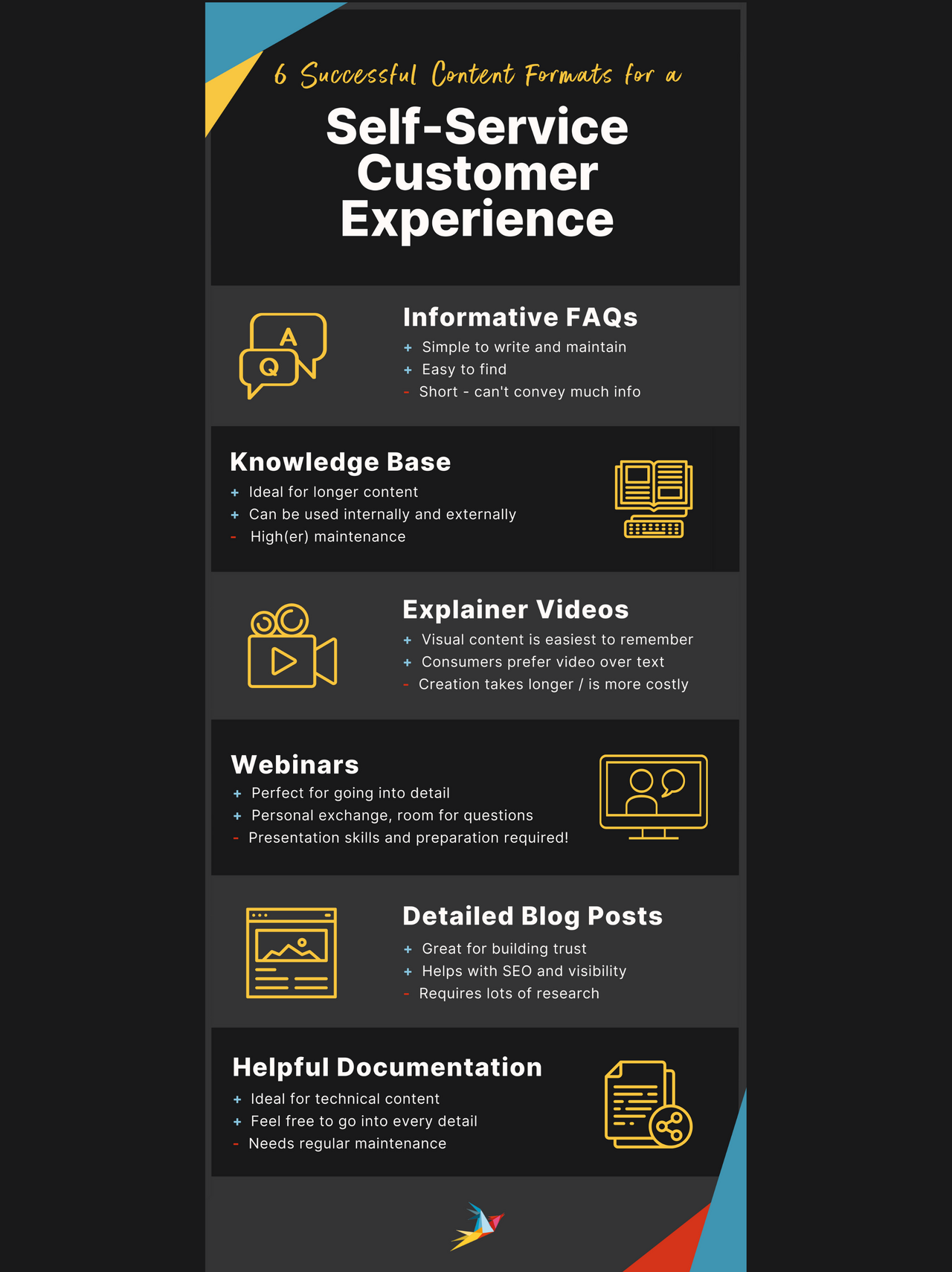Frequently Asked Questions (FAQs) can be found on almost any website and they do exactly what the name says: they provide answers to the most asked-for information. Check out our FAQs here at Zammad for inspiration!
Pro:
FAQs are easy and quick to write, and you can always add to them. They’re also often the first place a customer will head to when looking for additional info.
Con:
They’re short and sweet, which means that there usually aren’t any screenshots or graphics to be found here. So depending on how much information you want (and need) to pass on, FAQs might not be the ideal format.
A knowledge base is just what the name promises: A space where all the essential knowledge about your product or service is collected. Consider it your individual encyclopedia… or perhaps manual?
Pro:
Most helpdesks and/or collaboration tools will include a knowledge base in their set of features – as Zammad does! So there’s no time-consuming setup needed. Also, a knowledge base is an ideal place to collect longer content pieces, such as how-tos. You can even include graphics and screenshots and categorize your content very easily.
(Bonus: It also allows you to publish content both internally or externally, so you can use the knowledge base as an internal wiki, too!)
Con:
Due to the extensiveness of the content, a knowledge base requires higher maintenance. Keep in mind that every time something about your product or service changes, you will have to weed through all of your content to make necessary updates.
Check out the Zammad knowledge base to get a first idea of what it can look like – or find out more on the topic in our blog post on the most successful knowledge base formats!
Video content is the way to go! Did you know that 94% of consumers watch explainer videos to better understand a product or service? That’s one of the reasons why 85% of businesses use explainer videos as part of their content strategy.
Pro:
Our brains find visual content much easier to progress and remember. So if you’re looking for an efficient and easily understandable way to transmit information, this is it. Also, studies have shown that consumers are more likely to watch a video than read a long post.
Con:
Video content requires a higher effort from your side. Producing the content (both the script and the visuals), cutting, editing, etc. takes a long time. Alternatively, you can outsource this project to one of the many talented agencies out there – but this is costly, so keep your budget in mind.
Bonus tip: Screen recordings that are just a video of you (or a team member) showing something on their screen and explaining what they’re doing are a much easier and economical way to produce an explainer video!
Webinars are a fantastic way to engage with your customers, many of whom appreciate the opportunity to ask questions directly, and to be shown something live.
Pro:
Webinars are perfect for diving deeper into a specific topic, and yet they leave room for questions and exchange. If you find that you regularly set up (support) calls addressing the same topic, schedule a webinar on the topic and refer your corresponding customers to it! Not only will it save you time to cluster all these calls into one single webinar session, but it will also give other customers the option to join in and benefit.
Here’s an overview of our free webinar sessions at Zammad to give you a first idea.
Con:
Webinars should be at least 30 mins long to provide true value, so there is a fair bit of preparation required – and you need a team member who’s great at speaking in front of an audience!
Efficiency tip: You can also record a session in advance and simply provide the video. Same great content, much time saved! However, keep in mind that this is much less personal and doesn’t allow customers to interact with you and/or ask questions. Ideally, you’d hold the sessions live and then offer a recording afterward so customers can rewatch the parts that they found tricky to follow the first time around.
We probably don’t have to explain to you what a blog post is – after all, you’re reading one right now! Well, alright then, for the sake of completeness, here it goes: A blog post is a longer piece of written content (often 2,000 words or more, and for context, the one you’re reading right now is only about 1700 words!). It takes a detailed look at a specific topic. You could, in a way, consider a blog a “digital magazine“.
Pro:
Well-written blog posts are a great way to engage customers. If they find value in them, they might even share them with their network. Additionally, they help to build trust in your brand, position your company as thought-leaders, and prove to your customers that you truly know what you’re doing!
Bonus: A solid blog strategy will even help with your SEO and visibility!
Con:
Customers don’t just want any content. So you need to invest time to produce well-researched and well-written pieces. Also, the right blog post is often hard to find, as most blogs are buried somewhere in the footer of a website and many don’t even categorize the posts properly.
This one is a bit more specific. Documentation is mostly used in a software context, explaining to users how to install, maintain and update software that is hosted on-premise. Since Zammad is an open-source solution, documentation is essential for us.
Pro:
The perfect place to go into lots of technical detail – without boring the non-tech-savvy users to sleep! Feel free to go all-in – with screenshots, screen recordings, graphics, tables, etc.
Have a look at the official Zammad documentation for a first impression.
Con:
An extra space to maintain! (Remember how we said earlier that all content must be kept up to date?)
Extra tip: Here at Zammad, we find it ideal to have the documentation for technical topics and the knowledge base for more general questions. This way, you have two decluttered spaces and a clean separation – and you can always link between the two.
At Zammad, we still believe that nothing beats personal contact. However, we also want to provide our customers with what they expect from us – and we’re huge fans of efficiency. So find a good balance between self-service and direct support, and choose your content formats wisely. Surely some of the ones listed above are just perfect for your communication strategy!
Summary
The modern customer expects to be able to find information on their own. So on top of your own stellar support, offer them a variety of content formats that answer all their questions and erase pain points. With all your teams working closely together, you can offer a true 360° customer service experience.

